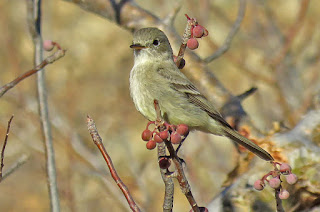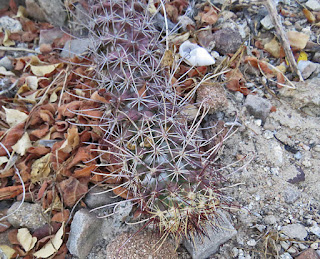Our third
day on the WINGS tour to Baja California’s Cape Region was a very relaxed one.
It began with a picnic breakfast outside my hotel room, as we watched the sun
rise over the Gulf of California. We then drove to some coastal desert scrub south
of Los Barriles in search of better views of California Gnatcatcher and other
desert birds.
We got great
views of the gnatcatchers, Ash-throated Flycatcher, Gray Vireo, and this Gray
Flycatcher. The plant is one of several species of elephant tree in the genus Bursera found here, and the berries are
food for the ash-throat and the vireo, but I’m not sure about the Gray
Flycatcher.
It was fun
to see this Fouquieria diguetii,
Adam's Tree in bloom. I have one in a pot on my front porch that I bought at a
nursery here in Tucson several years ago. Costa’s Hummingbirds love it.
This appears
to be Cochemiea poselgeri, Baja
California Cochemiea, a genus of cactus endemic to Baja California, related to Mammillaria.
In the later
morning we walked about 3/4 mile (to avoid getting stuck in sand) to a small
estuary north of La Ribera.
We padded the list with several shorebirds, herons,
and ducks, but we also had two surprises here, both new for me in Baja
California. One was this first winter Glaucous-winged Gull.
The other,
even bigger surprise was a group of four Groove-billed Anis. The species bred in
the region in the 1800’s but is now a very rare vagrant from across the gulf.
There were only about four records in over a hundred years up until what
appears to have been an irruption in late November 2015, with one eBird
submission reporting 14 birds. They have now been reported on eBird almost
continually since then, up the gulf coast of the peninsula from San José del
Cabo as far north as La Paz. I suspect they bred last year.
We finished
the day with a drive to La Paz, where we had a full day and a morning of
birding, the topic of my next blog.













No comments:
Post a Comment